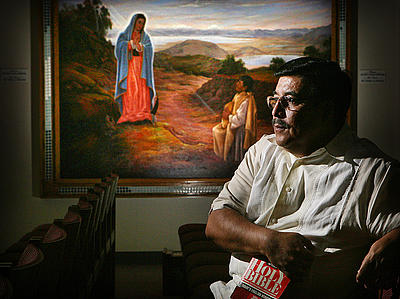A new batch of deacons is about to be ordained in California, and the local paper is catching on to something many of us have known for a while:

Armando Hernandez
Photo by David Bauman, The Press-Enterprise
As the number of Catholic priests in the United States continues to decline, men like Armando Hernández are becoming increasingly important to parish life.
Hernández and four other Inland men will be ordained today as deacons, clergy who can carry out many of the functions of a priest.
Hernández did not begin the five-year deacon-formation process to help address the shortage of priests in the Diocese of San Bernardino. But by performing weddings and baptisms, presiding over funerals, delivering homilies, attending to the sick and representing their parishes at public events, deacons give priests more time to attend to parishioners’ needs.
“They’re absolutely critical,” said John Andrews, spokesman for the diocese. “It would be an even greater strain on our priests without the deacons.”
The growing San Bernardino diocese, which serves 1.2 million Catholics in Riverside and San Bernardino counties, has the fourth-highest ratio of parishioners to priests of the nation’s 195 dioceses: more than 5,100 to 1.
The diocese has been more successful than most in attracting deacons. Nationally, there are 2.5 priests for every deacon. As of today, there will be 112 deacons in the San Bernardino diocese and 91 priests in active parish ministry.
The diocese’s Office of Diaconate Formation talks with priests about how to identify good deacon candidates and holds informational sessions in parishes for prospective deacons, Andrews said.
Deacons were part of the early centuries of Christianity, but the position eventually became only a transitional one for men on the path to priesthood. The Vatican did not reinstitute a “permanent” diaconate until 1967.
There are more than 16,000 deacons nationwide, up from fewer than 11,000 in 1995, according to the Center for Applied Research in the Apostolate at Georgetown University in Washington, D.C. In that same time, the number of priests fell from about 49,000 to fewer than 41,000.
The growth in deacons is in large part because far more men are eligible for the diaconate than for the priesthood, said Deacon William T. Ditewig, former executive director of the U.S. Conference of Catholic Bishops’ Secretariat for the Diaconate and director of graduate programs in theology at St. Leo University in Florida.
Check out the rest at the link.
